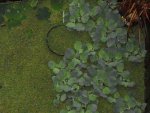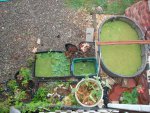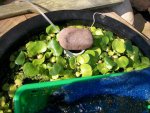j.w
I Love my Goldies
- Joined
- Feb 1, 2010
- Messages
- 34,122
- Reaction score
- 21,010
- Location
- Arlington, Washington
- Showcase(s):
- 1
- Hardiness Zone
- USDA 8a
- Country

Wow I did not know we could have turtles in our ponds here in the PNW kind of close to your area. I always thought the turtles had to bury them selves in the soil somehow to survive the winters here. Just went and looked this up Mucky. Think they need a mud bottom to bury into:
What Turtles for an Outside Pond in BC?
By Cristine Travis, eHow Contributor
Water turtles add color and diversity to an outdoor pond, and the warm summers in British Columbia allow pond owners to enjoy seeing their turtles basking in the sun. The cold winter, however, can put some turtle species at risk. The best selections for an outdoor pond are turtle species that already live in British Columbia and thus are adapted to surviving harsh winters.
What Turtles for an Outside Pond in BC?
By Cristine Travis, eHow Contributor

Water turtles add color and diversity to an outdoor pond, and the warm summers in British Columbia allow pond owners to enjoy seeing their turtles basking in the sun. The cold winter, however, can put some turtle species at risk. The best selections for an outdoor pond are turtle species that already live in British Columbia and thus are adapted to surviving harsh winters.
-
Western Painted Turtles-
Western painted turtles are bright green with yellow stripes. As adults, their shells become darker green or gray and their stripes fade. Adults grow to 12 inches, and females are typically larger than males. They eat aquatic plants, fish, insects and decaying matter. These turtles are a vulnerable species and should never be taken out of the wild. Wild-caught painted turtles suffer from a variety of stress-induced illnesses, so owners should acquire these turtles only from breeders.
-
Several species of pond turtles are suited for the climate of British Columbia. The western pond turtle in particular is an excellent choice. This species has been eliminated from Canada as a result of overhunting and habitat destruction. Nevertheless, these turtles are well-suited to the British Columbian climate. These turtles have smooth brown or gray shells with faint spots. They are easily differentiated from other water turtle species by their drab colors and lack of facial markings. They grow to be about 10 inches as adults.
-
Red-eared sliders are among the most popular species of aquatic turtles. Though this species of turtle is not native to British Columbia, it was introduced in the late 20th century and has thrived there. In the 1970s they were frequently sold in pet shops as tiny hatchlings. When they grew into 12-to-14-inch adults, they died from inadequate care. In a large pond, however, these turtles are very hardy. They are bright green with white and green legs as hatchlings. As adults, their markings are fainter and they have darker green shells. They are named for the red markings just behind their eyes.
-
Several other species of turtles that are not native to British Columbia can be safely kept in outdoor ponds. Mud turtles are drab-colored animals that live in shallow waters. Cooters are brightly colored and thrive in warm weather. Snapping turtles can be challenging pets but will thrive in a large pond with lots of fish. Each of these species needs to be brought inside during the winter or provided with a pond heater and de-icer.
-
All pond turtles need at least 10 gallons of water for every inch of length, so a 10-inch turtle needs 100 gallons of water, and two 10-inch turtles need 200 gallons of water. Water turtles brumate -- a kind of hibernation -- during the winter, and turtles can survive very low temperatures when they have mud to burrow under. When the temperature drops near freezing, turtles need an air stone to maintain proper oxygenation. You should drill holes in the pond ice so the turtles can periodically come up for air. Some turtles may die from the stress of brumation, so it's a good idea to bring your turtles indoors during the coldest part of the winter. Most species of turtle that are not native to British Columbia will need to come inside when the temperature falls below 55 degrees Fahrenheit.
-






